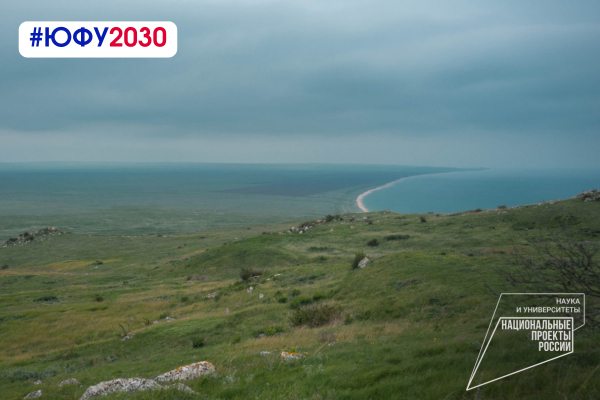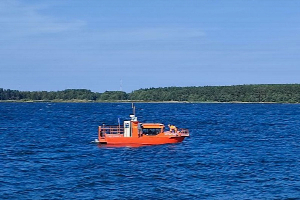
In the last decade, the cities of the Republic of Crimea have been actively developing and growing. The pace of urbanization pleases local residents but creates risks to the flora and fauna of the peninsula. Using neural networks, a scientist from the Institute of Earth Sciences of the Southern Federal University analyzed satellite images of the Kerch Peninsula over the past 30 years and identified which events played a key role in shaping its landscapes.
Human activity — urbanization, the expansion of agriculture, general land—use transformations - does not pass without a trace for natural landscapes. In order to preserve the biodiversity of the ecosystem in protected areas, of which, for example, there are several in the vicinity of the city of Kerch, it is necessary to introduce sustainable land management methods. Such methods should be based on reliable scientific data on climate change, trends in the transformation of natural areas and the current state of the soil and vegetation cover. Artificial intelligence can collect all this data if it is properly trained.

At the Southern Federal University, Denis Krivoguz, a leading researcher at the Department of Oceanology of the Institute of Earth Sciences of the Southern Federal University, is engaged in the use of deep machine learning to study climate change. Denis Krivoguz is a participant in the postdoctoral program of the Southern Federal University within the framework of the Priority 2030 Development Program (national project "Science and Universities").

"The accelerated expansion of cities, due to infrastructural and economic development after the annexation of Crimea to Russia, has led to the transformation of some natural ecosystems into urban landscapes. Comprehensive strategies that take into account environmental and social considerations are needed to effectively mitigate the effects of these changes on nature. The findings of this study can be used in the development of nature conservation initiatives and regional planning," Denis Krivoguz said.
The study shows how climate change — both natural and human—caused — affects such an indicator as the dynamics of LULCC (land use and land cover change - land use and vegetation cover change). Tracking these dynamics both retrospectively and in real time has become possible thanks to the innovative use of ultra-precise neural networks and advanced satellite imagery.

"Remote sensing technologies and geographic information systems (GIS) have made it easier for scientists to analyze the dynamics of LULCC and increased its accuracy. The next stage will be forecasting scenarios for the future of soil and vegetation cover," Denis Krivoguz said.
Of the climatic factors, the water resources and vegetation of the Kerch Peninsula are most strongly influenced by precipitation, and to a lesser extent by air temperature. The low amount of rain and snow on the Kerch Peninsula in recent years has led to a decrease in the number of reservoirs, which affects both aquatic and terrestrial ecosystems. Natural areas such as wetlands and forests are primarily under threat.
"Right now, active attempts are being made to increase the forest fund: the maps show that new forest plantations have been appearing in the north of the peninsula for the last few years, but the total area of the forest fund is still decreasing, because old forest plantations and forest belts in the vicinity of Kerch, planted almost a hundred years ago, disappear faster than new ones are planted," he added Denis Krivoguz.

This study not only provides the authorities of Russia and the Republic of Crimea with valuable information for building environmental policy on the territory of the Kerch Peninsula, but also opens the way for similar research in other regions of our country. Denis Olegovich described in detail the ratio of speed and accuracy of different machine learning algorithms and developed the most optimal methodology that other scientists can adopt.
The article "Revealing the interrelationships of climate, land use and soil and vegetation cover on the Kerch Peninsula using structural equation modeling" was published in the journal Climate.
Short link to this page sfedu.ru/news/76251




